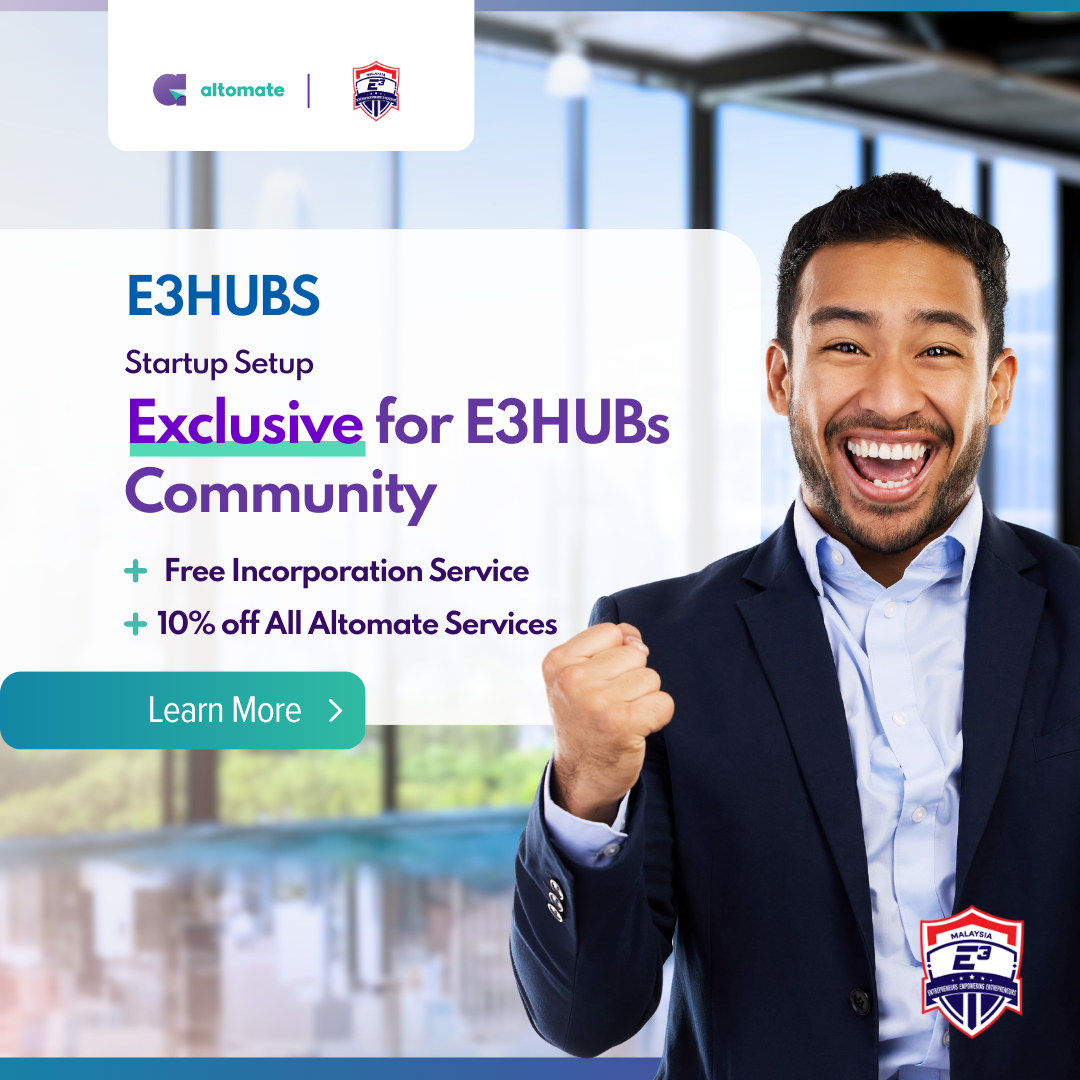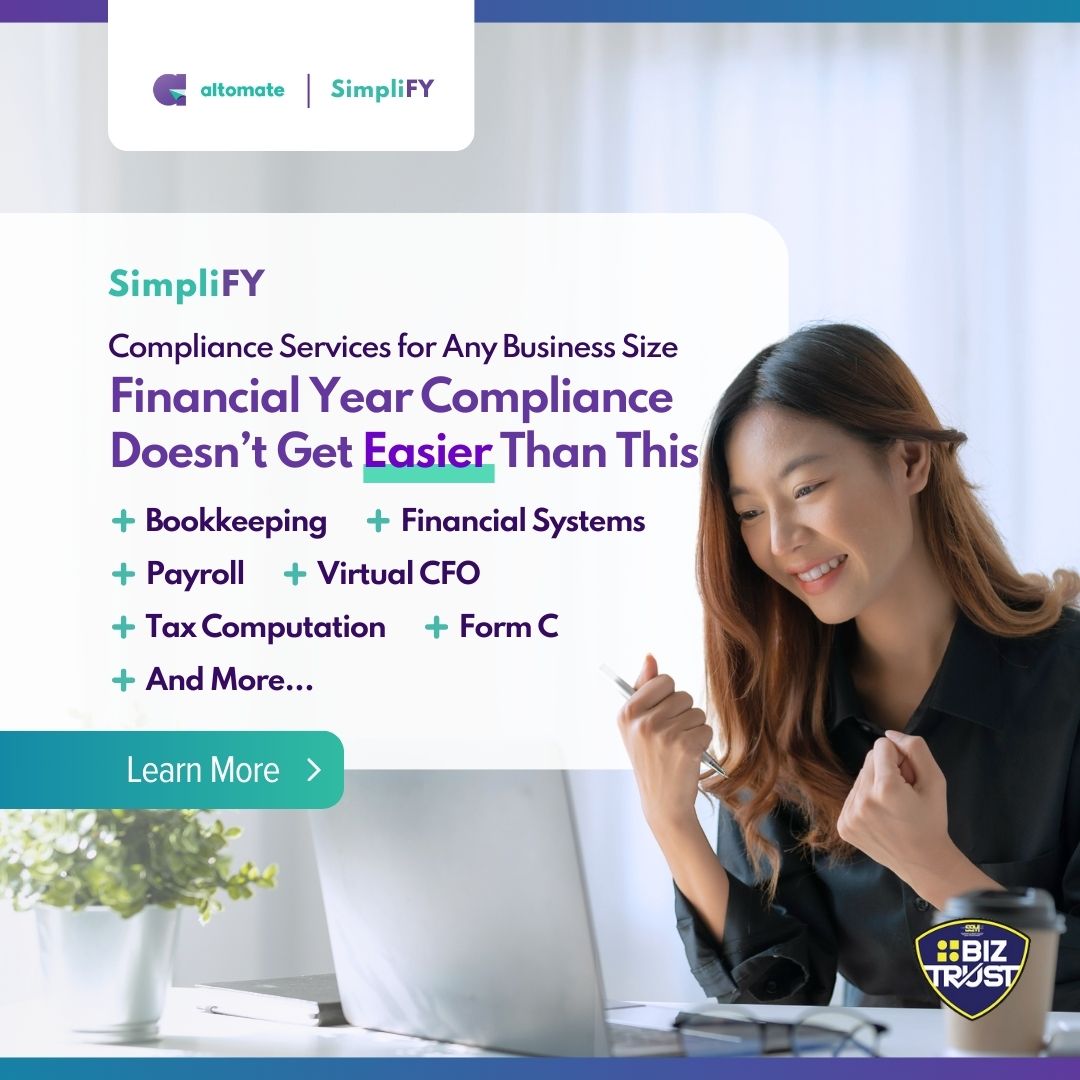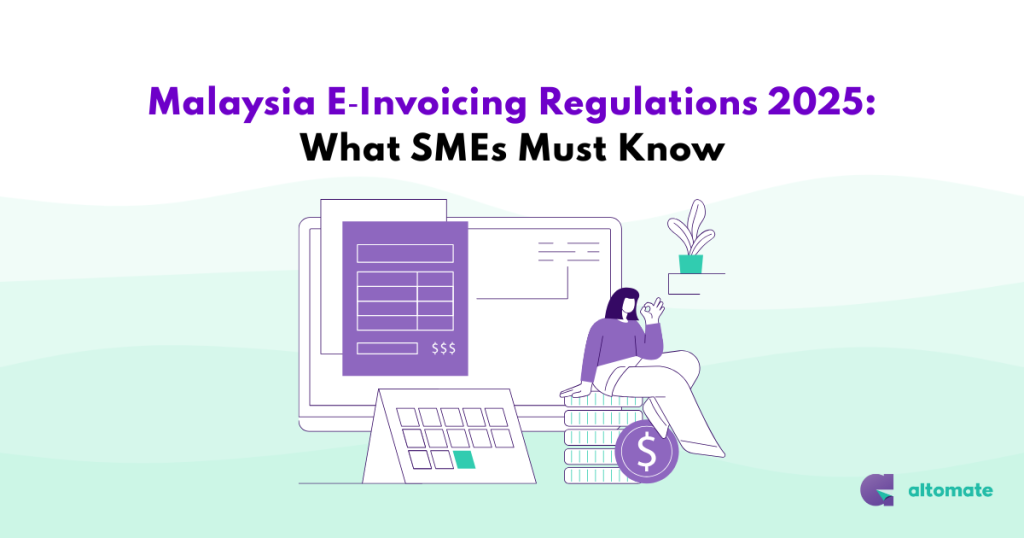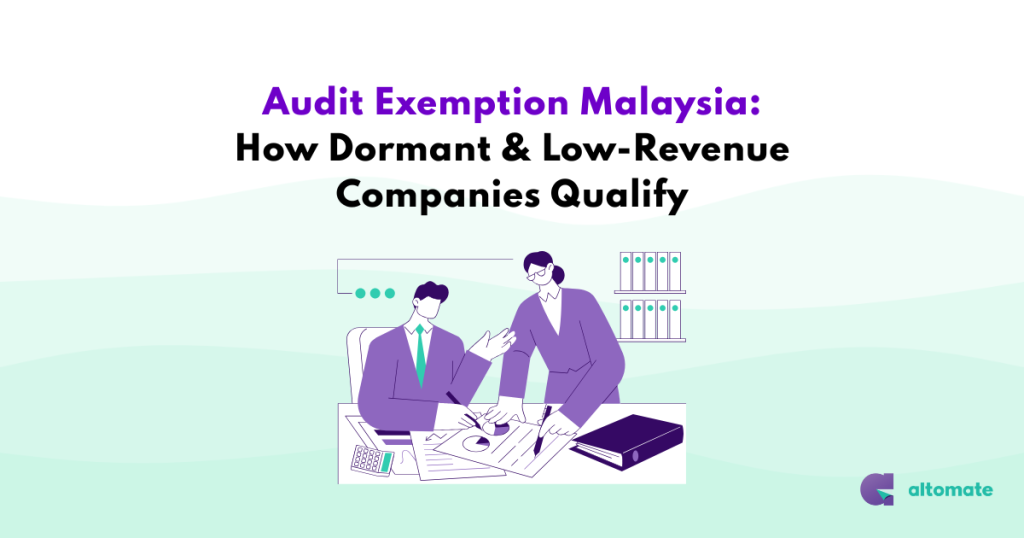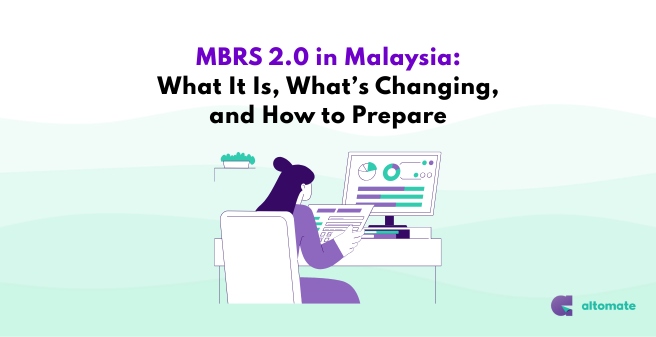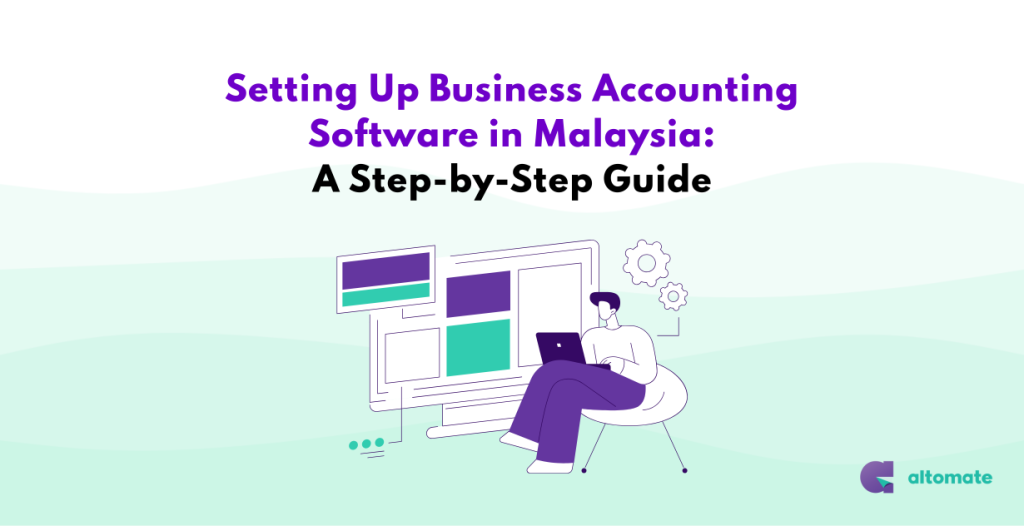
Reading Time: 6 Minutes
Setting up business accounting software in Malaysia should be a high priority when starting a business.
Why?
Accounting software is a game-changer—it streamlines financial management, improves accuracy, and ensures compliance with tax regulations. Yet, for many small business owners, setting it up can feel overwhelming, especially if you’re new to digital accounting tools.
Step 1: Choose the Right Accounting Software
Example Scenario: Retail Business
Sarah owns a small retail clothing store and wants to streamline her bookkeeping. She needs accounting software that integrates with her point-of-sale (POS) system, tracks inventory, and automates tax calculations.
Sarah evaluates different options:
- Xero – Offers seamless POS integration and inventory management.
- QuickBooks Online – Provides detailed financial reports and easy invoicing.
- Bukku – Best for tax reporting and payroll processing.
After comparing features and pricing, she chose Xero because it syncs with her POS and manages inventory efficiently.
Selecting the best accounting software is like choosing the perfect pair of shoes—you need something that fits your business comfortably and supports your growth. Here are some examples of how different companies can benefit:
- Freelancers & Solo Entrepreneurs: A simple cloud-based tool like Wave or Zoho Books can track invoices and expenses efficiently without overwhelming features.
- Small Retail Shops: Software like Xero with inventory tracking and POS integration can help manage stock levels and daily sales effortlessly.
- Growing SMEs: A feature-rich option like QuickBooks Online allows multi-user access, integrates with e-commerce platforms, and supports payroll management.
- Large Enterprises: If your company handles complex financials, SAP Business One or Oracle NetSuite provides advanced reporting, tax compliance, and ERP functionalities.
Consider your business type, growth goals, and budget before choosing.
Before setting up your business accounting software in Malaysia, selecting the right accounting software is crucial. Consider factors such as:
- Business Size & Needs – Small businesses may need basic invoicing and expense tracking, while larger businesses require advanced reporting and multi-user access.
- Cloud-Based vs. On-Premise – Cloud solutions like Xero, QuickBooks, or Bukku allow access from anywhere, while on-premise software provides more control.
- Integration Capabilities – Ensure the software integrates with other essential tools, such as payroll, inventory, and CRM systems.
- Ease of Use & Support – User-friendly software with strong customer support can save time and reduce errors.
On-Premise Desktop Software Options
For businesses that prefer on-premise accounting software, options like SQL Accounting Software, AutoCount, and UBS Accounting Software provide robust financial management capabilities without relying on cloud-based solutions.
- SQL Accounting Software: Ideal for businesses needing a secure, local installation with advanced financial reporting and GST compliance.
- AutoCount: A great option for SMEs that require strong inventory tracking, invoicing, and integration with POS systems.
- UBS Accounting Software: Commonly used in Malaysia, UBS is well-known for its user-friendly interface, payroll management, and multi-currency support.
Step 2: Install and Configure the Software
Example Scenario: Configuring Xero for Retail Use
Sarah installs Xero and configures it to match her business needs:
- Company Profile Setup – She enters her business name, tax ID, and store details.
- Financial Year Setup – She aligns the software’s reporting period with Malaysia’s fiscal calendar.
- Bank Integration – She connects her business account with Maybank for automated reconciliation.
- Invoice Customization – She adds her store’s branding to invoices and sets up automated due date reminders.
Once you’ve selected the right software, it’s time to set it up properly to match your business operations.
- Example: A Malaysian-based SME in the F&B industry using Xero would configure its invoicing with Malaysia’s SST tax rates and integrate it with its POS system to capture daily sales data automatically.
- Financial Year Settings: Ensure the software is aligned with your fiscal year and reporting standards.
- Bank Integrations: Most modern software allows direct integration with local banks, such as Maybank, CIMB, and Public Bank, making reconciliation seamless.
- Invoice Customisation: Branding invoices with your company logo and preferred payment terms enhances professionalism and client experience.
Once you’ve chosen your software, the next step is installation and configuration:
- Create Company Profile – Enter business details such as company name, address, and tax identification number.
- Set Up Financial Year & Reporting – Configure the fiscal year, reporting format, and chart of accounts.
- Customize Invoicing & Payment Settings – Input business bank details, tax rates, and invoice templates for streamlined transactions.
Step 3: Import Financial Data
Example Scenario: Migrating Data from Spreadsheets
Before using Xero, Sarah tracked expenses manually on spreadsheets. To ensure continuity, she:
- Imports her Chart of Accounts – Categorizing revenue, expenses, and taxes.
- Uploads Customer & Supplier Data – Ensuring past transactions and contacts are intact.
- Syncs Bank Transactions – Automate reconciliation and reduce manual entry.
After migration, she verifies data accuracy by running a trial balance.
Migrating financial data is a crucial step to ensure continuity in your records. Here’s how it’s done:
- Importing Chart of Accounts: If switching from manual bookkeeping, structure accounts like revenue, expenses, and liabilities properly before importing.
- Example: A logistics company moving from spreadsheets to QuickBooks Online would ensure all vehicle maintenance costs, fuel expenses, and customer payments are categorised correctly.
- Customer & Supplier Data: For a seamless transition, businesses with recurring clients should upload customer details, outstanding invoices, and supplier payment records.
- Bank Statement Syncing: Instead of manually entering transactions, syncing with banks helps automate reconciliation and detect real-time discrepancies.
To ensure a smooth transition, migrate your existing financial data into the software:
- Upload Chart of Accounts – Create an organized structure for assets, liabilities, income, and expenses.
- Import Customer & Supplier Data – Transfer existing contact details for invoices and payments.
- Sync Bank Transactions – Connect your business bank accounts for automated reconciliation.
Step 4: Automate Key Accounting Processes
Example Scenario: Automating Payroll & Expenses
Sarah wants to streamline payroll and track expenses more efficiently:
- Payroll Automation – She integrates HReasily with Xero to handle employee salaries and statutory contributions.
- Expense Tracking – She links company credit cards to auto-track purchases.
- Recurring Invoices – Automates monthly supplier payments to avoid late fees.
This automation saves Sarah hours of manual bookkeeping every month.
When it comes to setting up your business accounting software in Malaysia, automation is the secret sauce to reducing manual work and avoiding costly errors. Here’s what you can automate:
- Invoice Reminders: Set up auto-reminders for unpaid invoices, reducing delays in cash flow.
- Payroll Processing: Monthly payroll, EPF, SOCSO, and EIS calculations can be automated using software integrated with your accounting system, such as HReasily or Talenox.
- Example: A digital marketing agency using Xero can automate expense tracking by linking corporate credit cards, ensuring all advertising costs are captured without manual entries.
- Recurring Payments: Businesses with subscription-based models, like SaaS companies, can set up automatic customer billing cycles.
Take advantage of automation features to improve efficiency:
- Invoice & Payment Reminders – Schedule automatic reminders to reduce overdue payments.
- Payroll & Tax Compliance – Automate salary calculations, EPF, SOCSO, and tax deductions.
- Expense Tracking – Use real-time expense monitoring to manage cash flow effectively.
Step 5: Train Your Team & Implement Best Practices
Example Scenario: Onboarding Staff to Xero
Sarah ensures her team can effectively use Xero:
- Staff Training – Conducts a training session on how to log sales and generate reports.
- User Access Management – Restricts permissions (e.g., sales staff can log sales, but only Sarah manages payroll).
- Financial Review Routine – Schedules a monthly review of income statements and cash flow reports.
With proper training, her employees use the software efficiently, reducing errors and increasing productivity.
Even the most powerful software is ineffective if your team doesn’t know how to use it properly. It’s an important aspect to set up your business accounting software in Malaysia.
- Conduct Staff Training: Organize sessions where employees learn to log expenses, generate reports, and process invoices.
- Example: A construction firm using MYOB can train its site managers to submit purchase orders and expense claims directly through the system.
- User Access Levels: Grant specific permissions based on roles. For example, an accountant may have full access, while a project manager may only need access to expense approvals.
- Regular Financial Reviews: Businesses should set a routine (e.g., monthly or quarterly) to review profit & loss statements, track overdue invoices, and assess cash flow.
To maximize efficiency, ensure your employees understand how to use the software:
- Conduct Staff Training – Teach employees how to manage invoices, expenses, and reports.
- Establish Access Levels – Restrict permissions based on user roles (e.g., accountants, managers, and auditors).
- Regular Financial Reviews – Schedule periodic reviews to analyze financial health and identify areas for improvement.
Unlocking the Full Potential of Your Accounting Software
Setting up accounting software is more than just installing an app—it’s about creating an efficient financial management system that saves time and enhances decision-making.
This is where Altomate steps in. We assist businesses in:
- Choosing the Best Software: We evaluate your business needs and recommend the ideal solution tailored for you.
- Seamless Implementation: Our team ensures smooth software setup, financial data migration, and bank integration.
- Automation & Compliance: From payroll calculations to tax reporting, we help automate key financial processes while ensuring compliance with Malaysian laws.
- Training & Ongoing Support: We provide employee training sessions and continued support to ensure you get the most out of your software.
Let Altomate take the hassle out of setting up your accounting software so you can focus on what truly matters—growing your business! With the right software and proper configuration, companies can streamline bookkeeping, automate tasks, and gain real-time financial insights.
Looking to set up accounting software effortlessly? Let Altomate assist you with expert guidance, seamless integration, and ongoing support to ensure your business runs smoothly.


